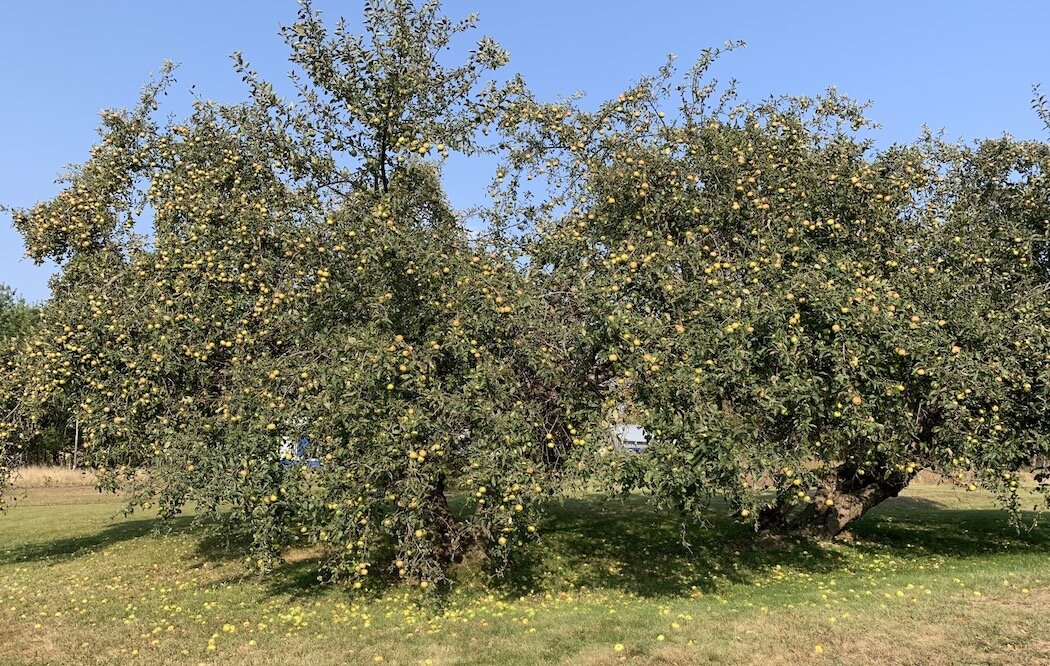Fallawater
Fallawater is a large, green, winter-keeping apple that was grown historically in Maine. It is thought to have originated in Bucks County or Montgomery County, PA or maybe even Germany in the early 19th century. It has been called (perhaps originally) Pharrar Walther, then Farawalder. Other synonyms include Winter Blush and Tulpehocken. It was brought to Maine well before 1900. Old trees can still be found here and there across the central part of the state. Maine orchardist, Francis Fenton, called it Fallswater. Our two favorite trees are growing side-by-side in the yard of a house on the outskirts of Oakland, ME. The trees are old, massive and bear huge crops every other year.
Fallawater has distinctive, large, blocky fruit (sometimes up to 4") with bluish-green skin and a rusty-pink blush. Sometimes it can be an intense, magenta red. We like this apple very much. It is excellent for cooking; it cooks slowly in the sauce pan and makes a very decent sauce. It’s ready to pick in the late fall and keeps in the root cellar until well into spring. We obtained our scionwood from the old trees in Oakland. Currently growing at Super Chilly Farm.
Fallawater is a winter apple of German ancestry. It may have been brought over from Europe, but more likely it originated in Pennsylvania from German seed. As with many heirloom varieties, there has been a lot of speculation about the name over the years. Some say it’s a mispronunciation of Pharrar Walther, the pastor who grew the apple in the mid-nineteenth century in Montgomery County, Pennsylvania. It also might be a take-off of Fallenwalder meaning “the apple of the cut down woods”. It was also called Tulpahocken, Winter Blush, Pollywaller, Pollywolly and several other variations on these themes.
The apple arrived in Maine post Civil War. Perhaps the scionwood came back tucked into the bedroll of a returning Maine infantryman. Once in Maine it became popular throughout the central and southern part of the state. Occasionally we still find old trees like the one in Harpswell discovered by the Robert McIntyre or the two gigantic side-by-side specimens in Oakland. Francis Fenton grafted it onto one of his trees in Mercer though we never did learn where he obtained the scionwood. He always called it “Fallswater.”
The big blocky fruit is a light bluish green, often with a blush. Typically the blush is a faint pink, and keeps in the root cellar until April or May. Long considered a cooking apple, it cooks slowly in the sauce pan and makes a very decent sauce. We’ve also used it chopped up in pancakes and other concoctions.

